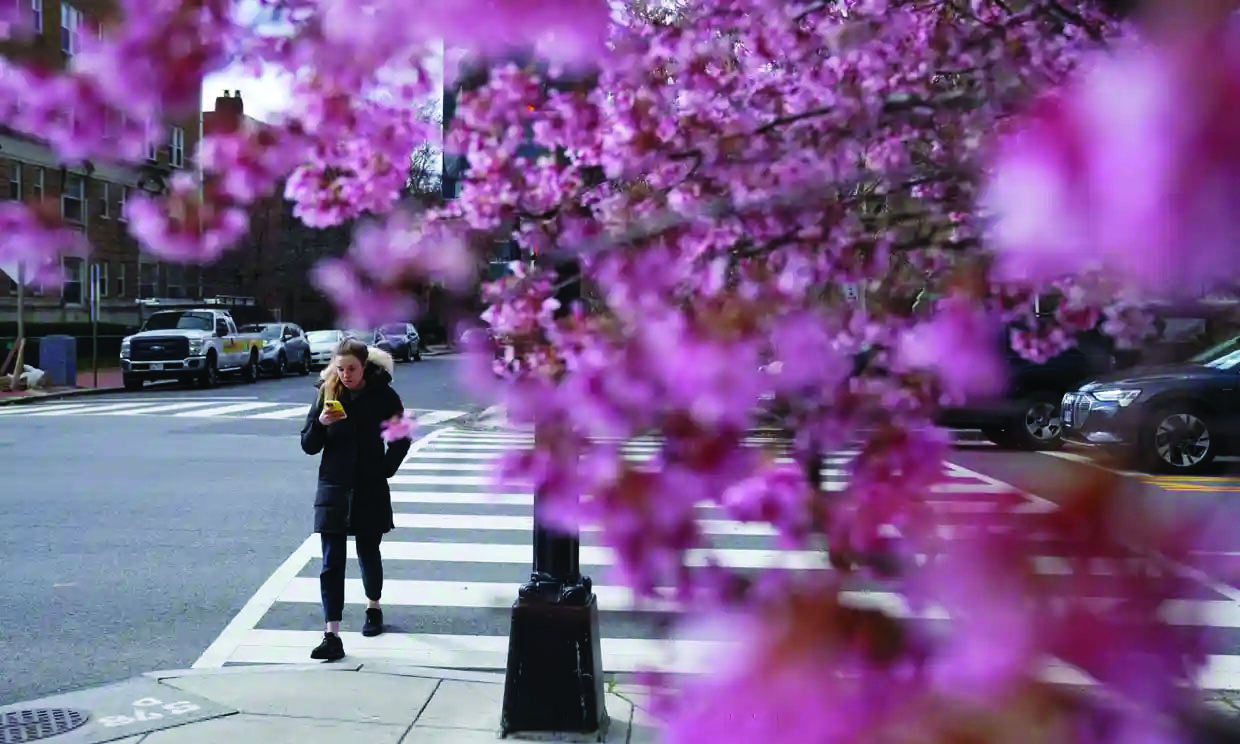
Parts of US see earliest spring conditions on record: ‘Climate change playing out in real time’

Parts of Texas, Arkansas, Ohio and Maryland, along with New York, are all recording their earliest spring conditions on record.
(SAI Bureau) Blooming daffodils in New York City. Leaves sprouting from red maples in North Carolina. Cherry blossoms about to bud in Washington. Record winter warmth across much of the eastern US has caused spring-like conditions to arrive earlier than ever previously recorded in several places, provoking delight over the mild weather and despair over the unfolding climate crisis. In New York, one of several US cities to experience its warmest January on record, spring conditions have arrived 32 days before the long-term normal, which is its earliest onset of biological spring in 40 years of charting seasonal trends by the National Phenology Network.
Spring activity has, meanwhile, arrived at least 20 days earlier than usual for huge swathes of the US south-east and east, with parts of central Texas, south-east Arkansas, southern Ohio and Maryland, along with New York, all recording their earliest spring conditions on record so far this year.“It’s a little unsettling, it’s certainly something that is out of the bounds of when we’d normally expect spring,” said Teresa Crimmins, director of the National Phenology Network and an environmental scientist at the University of Arizona. “It perhaps isn’t surprising, given the trajectory our planet is on, but it is surprising when you live through it.”Winter has barely registered for millions of people in the US north-east, with states across the New England region all experiencing their warmest January in the 155-year national record. New York City, which experienced more lightning strikes than snowfall in a balmy month, notched an average temperature 10F higher than the long-term average. The Great Lakes, meanwhile, have had a record-low amount of ice coverage during their usual February peak.
The procession of warm days has coaxed flowers from plants, with thousands of citizen observers reporting early budding in numerous locations to the National Phenology Network, a coalition of academics, government agencies and volunteers. Volunteers on the ground have noted instances of blooming over the past 15 years, while the longer 40-year record comes from a model of spring-like conditions devised by the network. This year, blooms have already been emerging from common lilacs in Pennsylvania, eastern redbuds in Virginia, tulip trees and red maples in North Carolina, and daffodils and violets in New York City, observers have told the network. Perhaps the most famous symbol of spring in the US, the cherry blossoms found in the heart of Washington DC, have started to bud, too, and could break a three-decade record for early blossoming, according to the National Park Service.The warm winter, and the galloping arrival of spring-like weather, is part of a longer-term trend of milder winters and scrambled seasons due to the heating of the planet caused by the burning of fossil fuels. Crimmins said her network of observers have voiced “surprise, concern and anxiety” over another early spring, which follows a string of similar early onsets over the past decade or so.